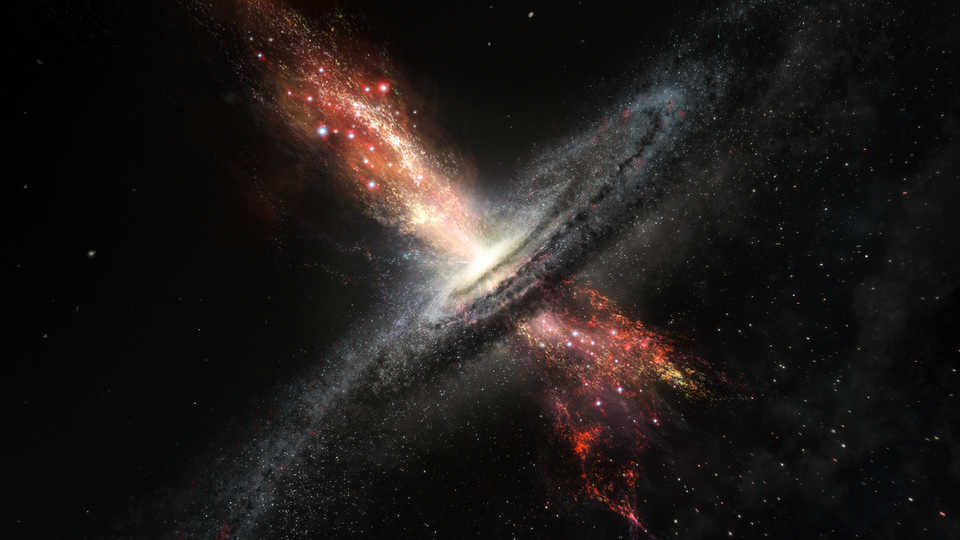Young Stars in the Stream

The first observational evidence for star formation in speedy outflows from galactic centers. Image credit ESO.
600 million light years beyond our Milky Way Galaxy lies a pair of merging galaxies fondly referred to as IRAS F23128-5919. The southern galaxy of the two has a significant outflow of material falling away from the active galactic nucleus at its center, where, through the use of the MUSE and X-shooter spectroscopic instruments on the European Southern Observatory’s Very Large Telescope (VLT), a group of scientists from the United Kingdom have found solid evidence for starbirth.
This is a moment when observation catches up with theory. Astronomers have long suspected that star formation occurs within the speedy outflows of material from galactic centers, and here researchers present the first observational evidence of this occurring.
Roberto Maiolino from the University of Cambridge explains, “No one has seen it actually happening, because it is a very difficult observation. Our results are exciting because they show unambiguously that stars are being creating inside these outflows.”
In this case, scientists unraveled the mystery by observing these outflows carefully with the help of spectroscopic data from the VLT. It turns out that these clouds are glowing hot as they are being ionized by a source, and that source is not a shock wave or activity from the galactic nucleus. This source is star formation where the particular amount of ionization in the outflowing material indicates that the complex is being excited by stars forming inside the material rather than outside of it.
Alongside the ionization information, measuring the velocities of gas and stars in the feature has turned out to be very telling. The massive galactic outflow is speedily streaming away from the active galactic nucleus at around 250 to 450 kilometers (155 to 280 miles) per second, and new stars formed out of that material are swept along in the current, galloping away from the galactic center fast enough to potentially escape the galaxy itself. Scientists are considering whether groups of jailbreaking stars like these could be the originators of material outside of galaxies, as the larger stars formed in these outflows eventually explode and spread their essence across the intergalactic void. However, the gravitational field of the galaxy acts as a braking mechanism, steadily slowing these outflowing stars, so not all stars in the stream of material inevitably make their escape. Those forming close in enough to the galactic center would experience enough breaking to remain bound to their host galaxy, while those forming farther away should start saying their goodbyes.
Discovering stars forming in this outflow is exciting news that will help us learn more about how galaxies as a whole create their stars. This particular outflow is producing an estimated 30 solar masses of star formation per year, while the pair of merging galaxies produces 115 solar masses a year in total. (Compare that to the Milky Way’s lethargic star formation rate of about one solar mass per year.) If an outflow like this can contribute a quarter of the total star formation in a galactic complex, learning its secrets will help scientists make great progress in their understanding of just how these galaxies keep their lights on.